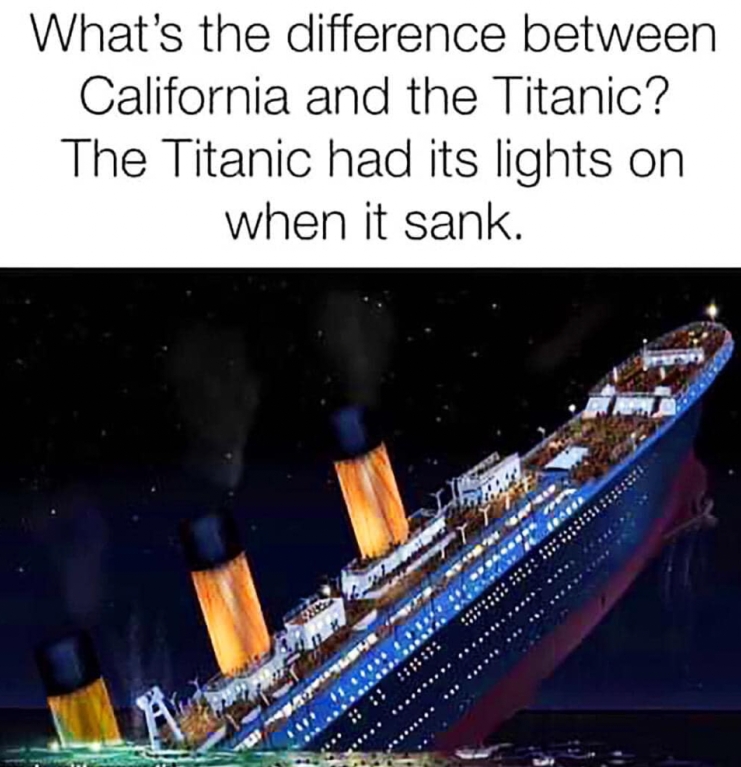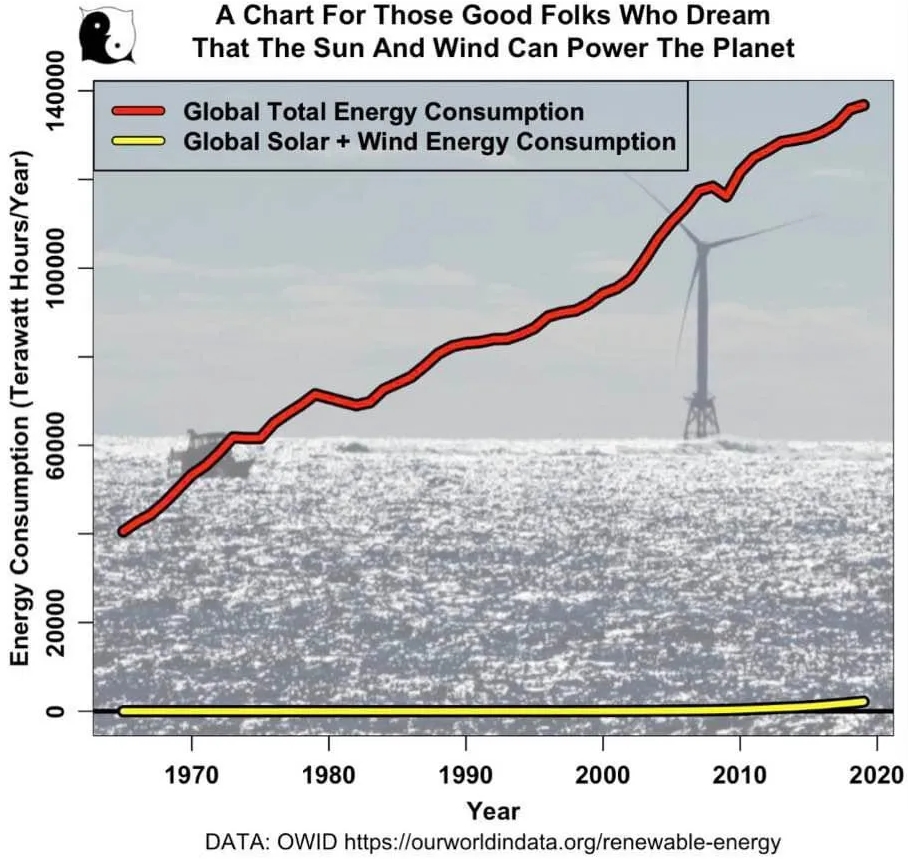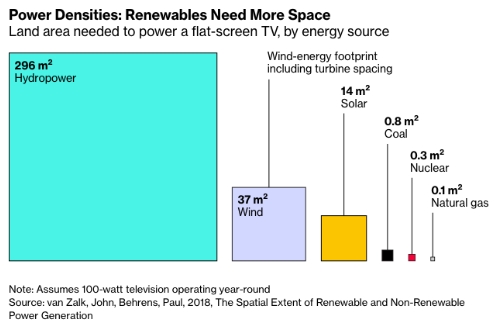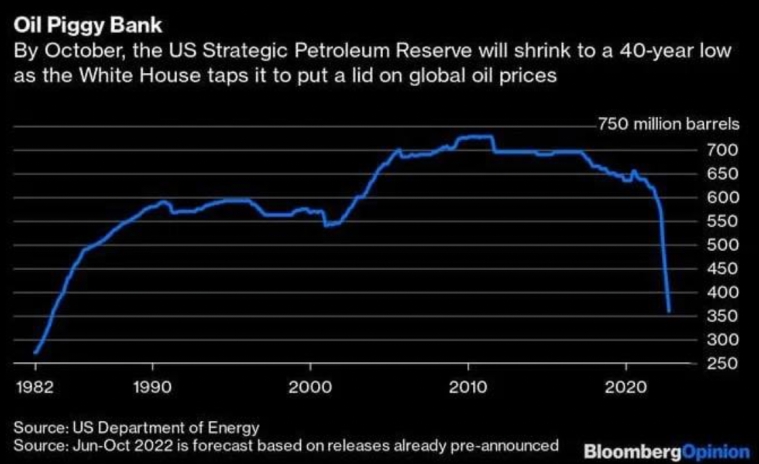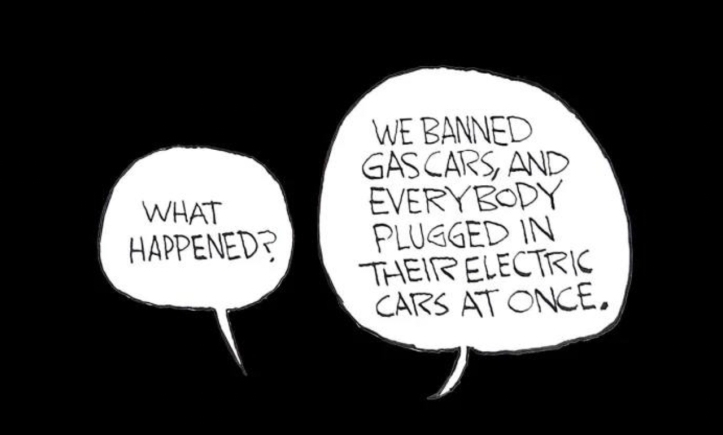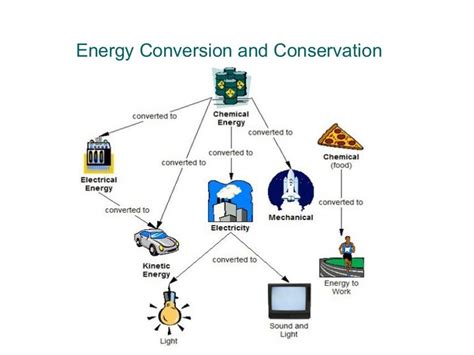Update
Some pertinent humor:
October 11, 2022
JPMorgan’s Jamie Dimon comments that Biden has screwed up the country’s approach to energy. He exclaims that we have it completely backwards now:
But we have a longer term problem now, which is the world is not producing enough oil and gas to reduce coal, make the transition, create security for people. So I would put it in a critical category.
October 6, 2022
A great summary about the importance of energy from the Z Blog:
The world as we understand it runs on electricity, which comes from fossil fuels like oil, gas and coal. If you happen to sit upon a lot of these things, you get to be important and have a lot of money. If you do not have these things, then you are dependent upon others for your welfare. There simply is no way to have a modern society without cheap energy.
September 22, 2022
It’s interesting how many people think that batteries are magical energy devices. It’s a belief that using batteries will somehow solve every crisis known to man. They don’t realize that the materials used to make the batteries typically come from heavy mining (lithium, zinc, cadmium, etc.), and more importantly, people overlook the fact that there has to be an energy source to recharge the batteries.
As this cartoon so effectively highlights, coal is still the predominant method for providing electricity.
September 7, 2022
Excellent input from Michael Shellenberger, commenting about the unrealistic expectations for “climate saving” energy production and the potential catastrophic economic impact from raising the cost of energy:
Many think we will subsidize our way to renewables, but we won’t, for inherently physical reasons. Sunlight & wind are too energy-dilute. Solar/wind projects need ~300x more land, 300% more copper, and 700% more rare earths than fossil fuels, making them prohibitively expensive…
We are headed for recession and Europe may be headed for depression. Western civilization will be rocked to its very core. Most of the politicians in power today won’t be in power three years from now. People will learn the physics of energy the hard way.
August 6, 2022
It’s not getting any better for the Europeans. This “climate change” virtue signaling is turning into a real-life train wreck for people. The CEO of the largest German energy company had this to say about the price of natural gas:
“What we see on the wholesale market is 20 times the price that we have seen two years ago — 20 times. That is why I think we need to have really an open discussion with everyone taking responsibility on how to fix that…”
September 3, 2022
A decade ago, German Chancellor Angela Merkel decided to eliminate nuclear energy by claiming that wind and solar energy could replace nuclear plants. They decided to shutdown their nuclear power plants and increase their dependency on wind, solar, and Russian natural gas. After the Russians recently decided to stop providing natural gas to the European Union, Germany entered a self-inflicted untenable situation (a political energy crisis). As a result, the German government has introduced sweeping laws that require the rationing of energy.
German politicians and media scoffed at every criticism of their dealings with Russia. President Donald Trump was widely mocked in Germany for suggesting that the country was getting fatally dependent on the Kremlin for its energy requirement.
September 2, 2022
It is useful to provide some explanations and illustrations about the availability of “energy” along with the significance of “energy density”. The red line in the first chart below shows the growth in total energy consumption over the last 50 years. The yellow line depicts the amount of energy provided by solar and wind sources during that same timeframe. This chart should help reinforce the reality that so-called “renewable energy” is not a panacea, nor is it ready in the near-term to step-in and provide large amounts of energy for the world.
The next illustration below provides a relative comparison of the amount of land necessary to power a 100-watt television for a year. The large box at the far left shows the 296 square meters needed in the case of hydropower. The very small box to the far right shows the 0.1 square meters needed in the case of using natural gas (note: energy density is also important in comparing batteries versus gasoline for powering an automobile).
The chart that follows shows how the Biden administration has drawn-down the strategic petroleum reserve dramatically in the last year (a political action to temporarily reduce the cost of gasoline for a few months). Since this reserve is intended to be available and used only in emergency situations for the USA, it shows the precarious position that the country has entered as a result of political machinations.
August 31, 2022
As indicated from the start of this cumulative blog posting, there is no real engineering reason for western countries to experience an energy crisis. Just like the Covid scamdemic, this emerging crisis is being self-induced by the virtue signaling technocrats and the green worshipers of Gaia. It’s the result of political gamesmanship:
The current crisis in Western Europe is due in part to the threatened cutoff of Russian natural gas. But countries like Britain and Germany are vulnerable to such a cutoff because they fecklessly failed to provide for their own energy self-sufficiency. That was an incredibly stupid policy, but one that is now being pursued by the Biden administration despite having the Western European example before it.
August 29, 2022
Here is an early preview of California’s approach for increasing the availability of electricity in the State for all those battery-powered cars needing to be charged. They have submitted a plan to save salmon by demolishing four hydroelectric dams on California’s Klamath River. We’ll see how this works out in the next decade…
August 26, 2022
The sheeple of the world love to show their concerns for the notion of impending climate change, the necessity of recycling, and/or the devastating effects of carbon dioxide. Unfortunately, almost all of those are big con games. Buying battery-operated vehicles is not going to magically save the world… You can take the metrosexual governor of California and put him to the test against the reality of total lifecycle costs for energy, and he won’t know what to say.
When it comes to energy, it’s all about the harvesting and delivery cost as well as the energy density that fits into a designed package. The virtue signaling about climate and energy has gotten out of control.
Germany and Britain have seen average electricity rates rise 60%–110% over the past two decades. In addition, there are now 20 million American citizens that can’t afford to pay their utility bills. Yet, there are those in government that want to artificially increase the cost of energy for our citizens.
While lithium batteries are much better in terms of energy density (energy stored per unit of weight), they still cost much more than the fossil fuel equivalent (without even considering the environmental impact of lithium mining).
If you total-up the cost over the past two decades, the cumulative subsidies across the world for biofuels, wind, and solar approach almost $5 trillion, all of that to supply roughly 5% of global energy. Does that really make sense to you?
May 31, 2022
The CEO of GE spoke recently at an energy conference in California where he indicated the importance of addressing the reliability, affordability, and sustainability of energy.
Frankly, I have a very simple perspective on the notion of the “energy crisis” – namely, there is no such thing. Recall your basic high school physics class – you neither create nor destroy energy. You just change it from one form to another (from chemical to mechanical – internal combustion engine; from mechanical to electrical – a generator; and so on). There are endless amounts of energy available in the universe. Thus, it’s really an “energy cost conversion crisis”. That is, how much does it cost to convert from one form to another, and can anyone afford that conversion cost, and does the government artificially inflate the cost of energy…
And never forget the practical engineering perspective: There is no such thing as a silver bullet. It’s all about the trade-offs.


